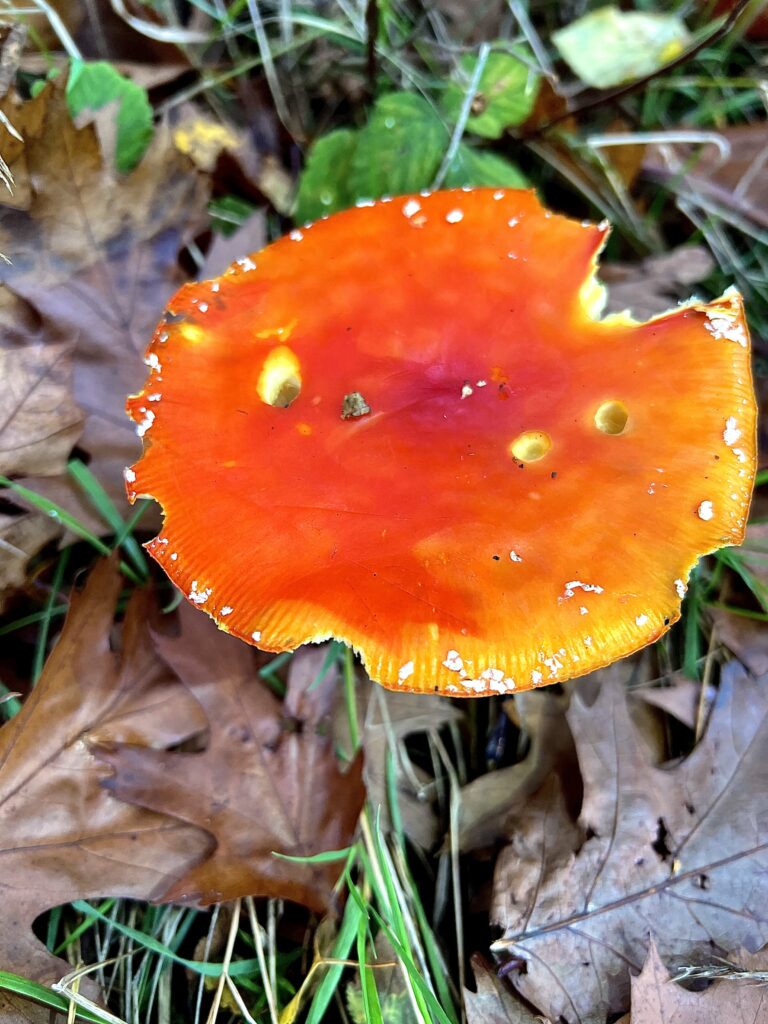
Fly Agaric Mushroom. Photo taken near the golf course. Credit Martin Hill
This fly agaric (Amanita muscaria), native to the UK and one of the most easily recognisable fungi in the world, was photographed near the golf course. The bright red cap with white spots and white gills, is a sign that autumn has arrived. The fly agaric is poisonous, highly toxic to humans and should not even be touched. Some animals, such as red squirrels and slugs, seem to be unaffected by the poison. It contains ibotenic acid, which both attracts and kills flies, which gave the mushroom its name.
Fly agaric grows on light soil on heathland and in woodland among birch or spruce trees, often wrapping their mycelium around the roots of the trees and transferring nutrients from the soil into the roots in exchange for sugars produced by the trees.
An investigation of this mushroom by Robert Gordon Wasson an ethnomycologist, and John Rush, an anthropologist, concluded that this mushroom is likely to be closely related to Christian imagery. They found that the winter solstice ceremonies of the indigenous people of the North Pole had similarities with traditional festivities around Christmas Eve.
In the Arctic, the winter solstice on 21 December featured ceremonies guided by shamans who collected the mushrooms and dried them by putting them in socks to hang over the fire. This helped reduce their toxicity, as bits of the mushroom were then eaten by the shamans, producing hallucinogenic experiences. The legends go on to reveal that the shamans had visions of turning into animals and flying towards the North Star in search of knowledge (or gifts) to share with the community. The yurts where the people lived had a hole in the roof, through which the shamans would descend, bringing the gifts obtained on their flight through the skies. The shamans dressed in red and white, to honour the mushroom.
While the Christmas festivities have since been linked with Germanic and Nordic myths as well as Turkish traditions, the image of the fly agaric remained a feature of Christmas cards in Victorian and Edwardian periods, highlighting its connection to Christmas over hundreds of years.
Further information can be found on the Fungi Foundation website.
